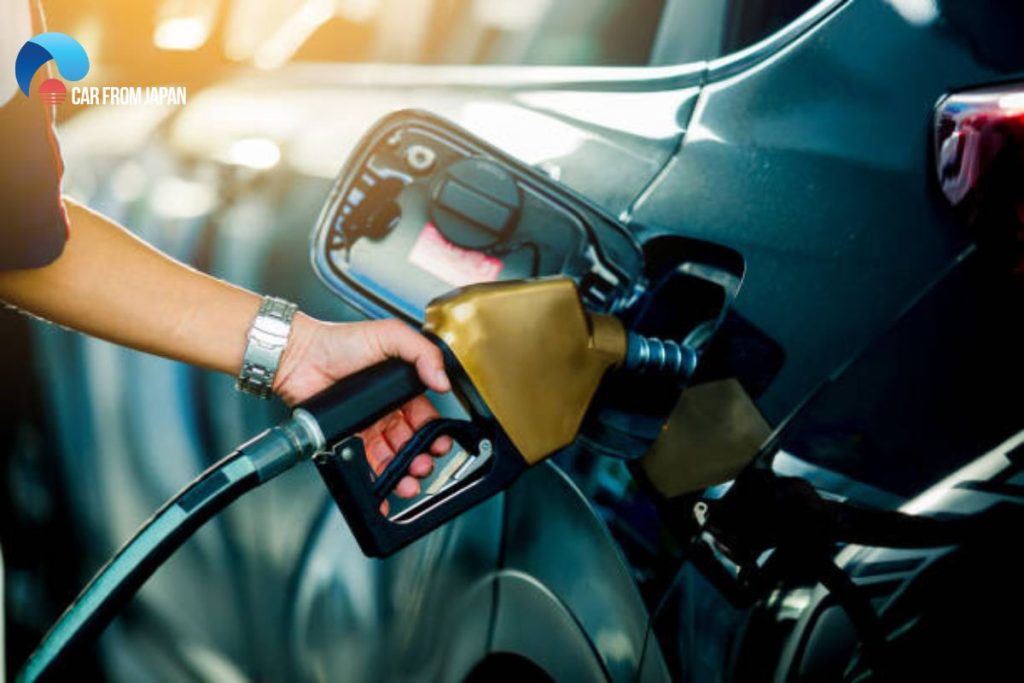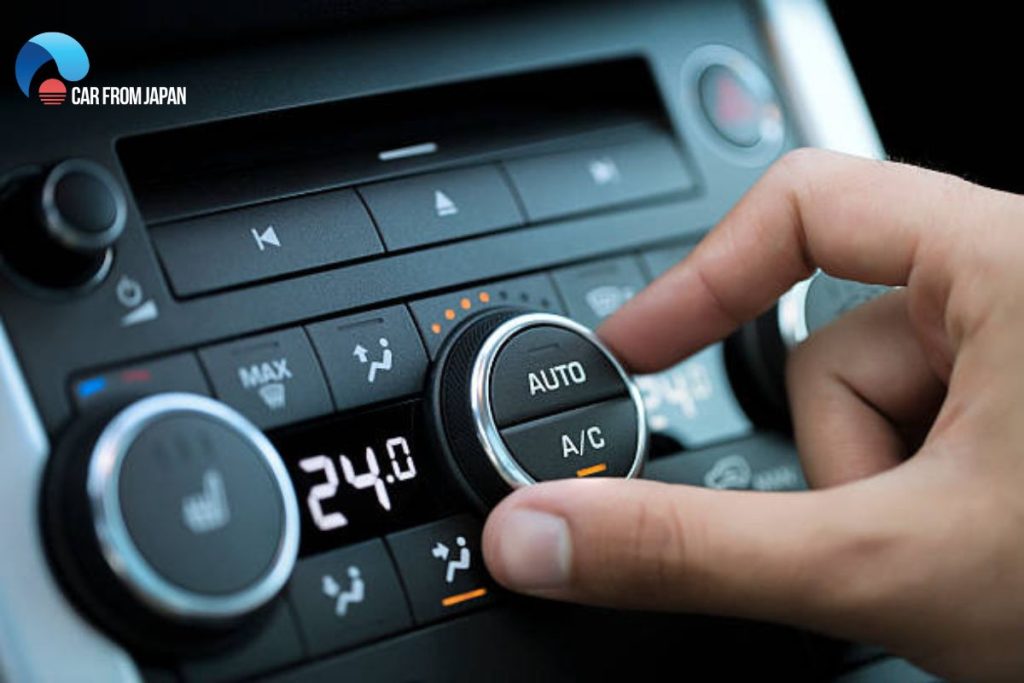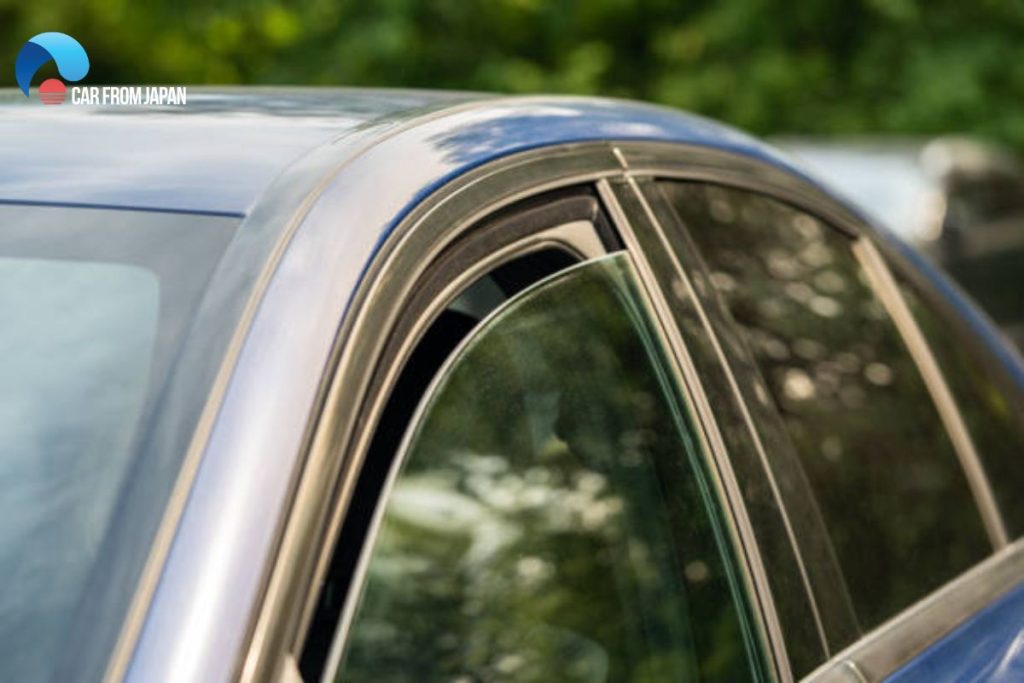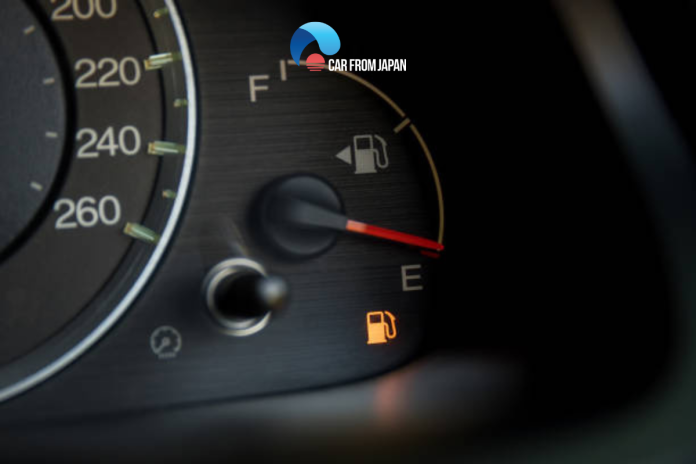Feeling the pain every time you fill up at the gas station? You’re not alone. While you can’t control the price of gas, you absolutely can control how much of it your car burns. How to save gas while driving? We’re going to cover 10 simple, no-nonsense tips that will genuinely help you save fuel and keep that money in your pocket where it belongs.
Contents
- How To Save Gas While Driving: 10 Surefire Fuel Efficiency You Should Do
- 1. Accelerate smoothly
- 2. Don’t push the accelerator too far down
- 3. Turn the air-conditioning off
- 4. Check your tire pressure regularly
- 5. Don’t carry unnecessary weight
- 6. Don’t drive during rush hours
- 7. Service your car regularly
- 8. Remove the roof rack off your car
- 9. Close your windows and sunroof if driving on the highway
- 10. Make fewer errands or trips
- Final Thoughts
How To Save Gas While Driving: 10 Surefire Fuel Efficiency You Should Do
When considering buying a car, the first thing that comes to most car owners’ minds is “How fuel efficient would that car be?” because gas expense is a big concern. Some drivers these days still hold the view that a vehicle’s fuel consumption depends entirely on the manufacturer. However, in reality, besides the vehicle’s structure and parameters, the driver’s driving style also significantly affects the vehicle’s ability to consume fuel.
However, we can now reduce fuel consumption for our cars by following these simple techniques:

1. Accelerate smoothly
Driving habits such as speeding and braking quickly can cause more fuel consumption. Therefore, if it is not an emergency, accelerate gently, brake early and smoothly, and if within safe limits, do not change lanes. This not only helps you save fuel but also helps you increase the life of your brakes and tires.
The perfect way to save fuel is to travel at a steady speed. We recommend a speed of 50mph, and in the highest gear, so if you are patient while driving, you will make fewer trips to the gas station in a month.
It’s unavoidable to overtake sometimes, but there’s no point accelerating past a car to simply be in front of it at the next set of lights.
2. Don’t push the accelerator too far down
This is not just because of what gear you’re in. You may be in a high gear and traveling at a steady speed, but if you are pushing the accelerator down a long way to avoid changing into a lower gear (for example, into third from fourth), then you’re using more fuel, not less. This is, of course, if you are driving an automatic car, the car will do a better job than you of choosing which gear to be in, so it’s not a problem for an automatic.
3. Turn the air-conditioning off

Turning on the air conditioner at low temperatures consumes about 15% of fuel. So if it’s not too hot, roll down the windows and turn off the air conditioning when driving around town. Whereas it can get very humid in African countries or in the summer for some, it’s enticing to drive around while the air-con is on. The problem with air-con being on all the time while you drive is that it uses quite a bit of fuel, so we’d advise you turn it off when you can and drive with your windows down if it’s not raining or when you are driving around town.
4. Check your tire pressure regularly
Please note that the lower the tire pressure of your car is, the more fuel the car needs to move down the road. We recommend that you take 5 minutes every two weeks to check the tires and if you aren’t sure what pressure they should be, you can normally find the figures near the lock inside the driver’s door or drive to the nearest gas station and have your tire pressures checked. You can even install the best tire pressure monitoring system for an easy tire pressure check-up. By using this device, you will be informed whenever your car has a tire pressure issue.
5. Don’t carry unnecessary weight
Your car needs more fuel to move around more weight. So just as you wouldn’t wear a heavy backpack unless you had to, don’t leave stuff lying around in the boot of your car. The heavier the item, the more fuel your car will consume
6. Don’t drive during rush hours
Few things are as frustrating as being stuck in a traffic jam. Not only is it an expensive way of traveling, but every time you start and stop in traffic, your car needs first gear and a huge amount of fuel to get moving again. The second gear is worse. The best solution is to not travel at all if you can during the rush hours of the day. If you have to travel in traffic a lot, then consider buying a hybrid car which uses less fuel in town than a petrol or diesel car.
7. Service your car regularly
The quality of your engine oil does indeed affect your fuel economy. Always make it a point to service your car regularly with genuine and good-quality engine oil. When the vehicle is damaged or does not meet emissions test standards, a thorough repair will help save fuel by an average of 4%. In particular, if the damaged oxygen sensor in the engine is replaced, fuel economy will increase by up to 40%.
Always make sure to change the oil in your car according to your vehicle’s maintenance schedule to save fuel.
8. Remove the roof rack off your car
Whereas most people like to have roof racks on their cars even when they don’t necessarily use them most of the time, this increases drag and makes your car use more fuel. If you can’t do away with a roof rack, get the latest roof rack, which is easy to fit and remove, such that you can stow it away when you’re not using it.
9. Close your windows and sunroof if driving on the highway

When you are driving on the highway and are moving more quickly, the shape of your car is very important. Car designers call it aerodynamics and make lots of effort to reduce ‘drag’ and make the car as sleek as possible. Anything that makes noise while your car is moving consumes more fuel. You can’t do much about the design of your car, but you can avoid making it consume more fuel on the highway by not leaving the windows or sunroof open. Use the air vents or air-con if it gets too hot.
10. Make fewer errands or trips
Did you know that when you drive a car that has been parked all day, the engine is cold and it uses a lot of fuel for the first five miles? To save fuel, why not combine all your daily trips into one big trip? Sometimes, of course, this is not possible but try to avoid making unnecessary trips.
Watch more:
Final Thoughts
Ultimately, you have more control over your gas mileage than you think. You don’t need a special car or some magic gadget. By simply changing a few driving habits and keeping up with basic maintenance, you can make a real, noticeable difference at the pump. It’s about driving smarter, not harder. Hopefully, this article is useful for you. If you have any questions about the car or any maintenance tip, feel free to drop them in the comment section.




This is wonderful please send me this information God richly bless u.
Wonderful information
Thank you for your comment.
Apwoyo matek lok man pire tek .
Thank you for your comment.
Muito importante!
l need one car Toyota Collora
Please send us your requirement in details to ask@carfromjapan.com. Our sales assistant will find the best deals for you. Meanwhile, here is our Toyota Corolla: https://goo.gl/OCzcu0
I liked this info I now going to be good at saving fuel
I need a tida
Thank you for your comment. If you are interested in the car, please send the inquiry to ask@carfromjapan.com or leave us your email address and phone number, our sales agent will contact with you.
Thanks for the information, pls my car engine is vibrating even after I have changed mountings, what is the problem?
Thanks very much for the nice tips. I have learned so much things from this.
Thank you! 🙂
I read your your ads on FB and i am very interested to learn more about how to save fuel also to your company as well.
Thank you for great information
Its very help ful
Can i know which oil is better for toyota sprinter..
We are happy to receive your comments. Please share with your friends so they can enjoy this article, too.
We will search more information about your question. Please keep following us for updates
This is very helpful information. I appreciate your efforts in giving such tips. Keep it up and please share more information in other areas of great importance. Bravo!!
Thanks ..I like the information
That’s good education, I never knew that.
Have learnt quite a lot. Good to hear about all this. Thanks.
Point 3 &9 ??????? What do I do, 9 or 3?
Magnificent
This knowledge is of great importance to me. Will apply the principles.
Thank you for this knowledge.
How to use a transmission crash?
Great stuff, very useful tips!
That good lesson for me. Am going to implement it.
the tips are really helpful thank you. but l still need to learn more, you can even help me how to choose a low fuel consumption car lam new in the field of cars. Barna
good lesson. help on how to determine a car which consarve low fuel.
Hey you can do some good bigger than coaster
Outstanding post once again! Thank you=) http://wiki.gevic.net/Gilbert_houses_For_Sale_-_offering_A_House:_finest_method_To_Do_It
Among the best.
i like it
Thank you for tips on how to save fuel.
Thanks alot for the advice.I now know.
Thanks very impressed c tips
Show quality is forme Toyota Nadia type su with engine 3s-Fe .4Wd ?manufactures 2000
Hi Julius, you can search for the car you like from our stock list https://carfromjapan.com/en/used-cars.
You can send inquiry for the car you like, we will send you total CIF through email. If you have any question, please email to ask@carfromjapan.com
Thanks for the information.
Thank you for sharing your comment. Do not forget to share the article with your friends.
How bout automatic cars?
seriously the tips you have given us is very interesting from here am to try some of them out.tanx
Great information
M enjoying. Very educative indeed.
Thank you for your comment @erique
Thenx alot for that, i didnt know abaut it.
Thanks for your advise
Thank you for your comment. We will keep on posting new useful information.
Thank you for your comment. Please keep on supporting us.
Many are sooooo beautiful. I basically recived the actual dark colored the for Romance system fond of Smart Balance Wheel http://adf.ly/6249830/banner/www.fashionhoverboard.com.
It is the best time to make some plans for the future and it is time to be happy.
I have read this post and if I could I want to suggest you few interesting things or suggestions.
Perhaps you could write next articles referring to this article.
I desire to read even more things about it!
Thank u for your comment
Great lesson. Worthy following.
But my aircon feels hot at times even if I have switched them off. What can be the problem?
Thank u for your comment. We will search more information about your question. Please keep following us for updates
I was recommended this website by my cousin. I am not sure whether
this post is written by him as nobody else know such detailed about my trouble.
You are wonderful! Thanks!
Arigatou. Thank you. Your comments encourage us a lot.
Do you have a spam issue on this blog; I also am a blogger,
and I was curious about your situation; many of us have developed some nice procedures and we are looking
to swap solutions with others, be sure to shoot me an e-mail if interested.
Hi, every time i used to check webpage posts here early in the
break of day, for the reason that i enjoy to find out more and more.
Arigatou. Thank you. Your comments encourage us a lot.
I visit day-to-day a few websites and blogs to read content, however this
weblog offers quality based posts.
Thank u for your comment
Educative information indeed,I have learnt a lot.
Thank you. We will provide more useful information like this. Stay tuned
Excellent, what a weblog it is! This weblog gives useful information to us, keep it
up.
Arigatou. Thank you. Your comments encourage us a lot.
Oh my goodness! Awesome article dude! Many thanks, However I am
having troubles with your RSS. I don’t understand the reason why I can’t join it.
Is there anybody else having identical RSS problems?
Anyone who knows the solution can you kindly respond? Thanx!!
Write more, thats all I have to say. Literally, it seems as though you relied on the video to make your point.
You obviously know what youre talking about, why throw away your intelligence
on just posting videos to your site when you could be giving us something enlightening to read?
Interesting literature…..
Arigatou. Thank you. Your comments encourage us a lot.
Thanks for the info
We are happy to receive your comments. Please share with your friends so they can enjoy this article, too.
Very constructive piece of article.
Thank you for your help in this.
We are glad that you like the article. Don’t forget to share with your friends!
There is a contradiction here about aircon you it consumes fuel and then again in the high you allow to put aircon on so that the car does not drag when you moving fast,.. how is that for saving fuel?
Thank for the nice&useful informations.
Thank you for sharing your opinion. Many people will agree with you too.
Its cool ,I like the advice very much…thank you
Thank you. We will provide more useful information like this. Stay tuned
Good stuff.
We are glad that you like the article. Don’t forget to share with your friends!
The information on how 2save fuel has added value 2my wealth of experience. Kudos
Thank you for your comment. Find this article useful? Please share exciting updates with your friends and they will love it!
Very useful information..!!
Thank you. We will provide more useful information like this. Stay tuned
Closing windows and switching off air con mmmmmmmm tend to contradict
Fine way of describing, and fastidious article to obtain information on the
topic of my presentation subject, which i am going to present in school.
We are happy to receive your comments. Please share with your friends so they can enjoy this article, too.
Wonderful!!!
We are glad that you like the article. Don’t forget to share with your friends!
Morning kindly assist on information on how to save fuel kluglar 2400cc
We are glad that you like the article. Don’t forget to share with your friends!
Thanks the useful tips on how saving fuel . I want to know how this set of TV in TOYOTA PROGRESS works. It’s full of Japanese language, how can I play DVD or Vcd??
I have Toyota premio but it consumes a lot of oil and petrol and the mechanic says i should buy slim engine is it true?
Very interesting keep it up plz.
Arigatou. Thank you. Your comments encourage us a lot.
Thank you so much for that Educative information.Please keep it up because we always need your good advise.May God Bless You All Abundantly together with your company.
Arigatou. Thank you. Your comments encourage us a lot.
Thanks for the advice but what is a roof rack please help me know it
Worth following send more
We are glad that you like the article. Don’t forget to share with your friends!
good staff
Thank u
Your article is great, thank you so much. I need a throtal Assembly for my Toyota Corolla Spacio-1999 model. Could you have one?
Thank u for your interested in CFJ. Sr, currently we don’t provide accessories for cars. We will try to expand our services. Please keep following us for updates
How useful information, congrats Carfrom Japan
I real need a car but don’t know how, especially with my constrained time to follow up. you have my email and my mobile phone no as well
Thank you for your comment. If you are interested in the car, please send the inquiry to ask@carfromjapan.com or leave us your email address and phone number, our sales agent will contact with you.
How far a car can go after fuel warning light
Thank u for your comment. We will search more information about your question. Please keep following us for updates
I need a toyota fielder
Thank you for your comment. If you are interested in the car, please send the inquiry to ask@carfromjapan.com or leave us your email address and phone number, our sales agent will contact with you.
Thanks for this information shared. Sometimes people buy cars but they have nowhere to get this kind of information.
We are glad that you like the article. Don’t forget to share with your friends!
Thank you, noted useful tips.
We are happy to receive your comments. Please share with your friends so they can enjoy this article, too.
Hi there everyone, it’s my first pay a visit at this site, and article is genuinely fruitful in favor of me, keep up posting such articles.
Arigatou. Thank you. Your comments encourage us a lot.
Thanks for the information
Thank you. We will provide more useful information like this. Stay tuned
Wow, wonderful blog structure! How long have you ever been blogging for?
you made blogging glance easy. The entire look of
your website is great, as smartly as the content material!
We are happy to receive your comments. Please share with your friends so they can enjoy this article, too.
Point 3 and 9 seem quite contradictory.
Thank u for comment
good for our dail;y life
We are glad that you like the article. Don’t forget to share with your friends!
Thank you for these vital information, please can I get an hybrid car in Nigeria, how do I fuel it.
Thank you for your comment. If you are interested in the car, please send the inquiry to ask@carfromjapan.com or leave us your email address and phone number, our sales agent will contact with you.
Thanks for your comment. I am interested in the car, could you email me back quotation for the best price truck inorder to save money before time.
Regards
Thank you for your comment. Find this article useful? Please share exciting updates with your friends and they will love it!
Thank you for giving us the good knowledge about car and how to use fewer fuel,
We are happy to receive your comments. Please share with your friends so they can enjoy this article, too.
This is good information, next time give us tips on how different it could be to care for a diesel engine and a petrol engine
How can I use the aircon vents when driving in highway at higher speedy of over 100
What are the functions of a relay switch /circuit and how does it’s bad connection affect the performance of a car?
My question is on tyre pressure,
I have ready an article from you on 10 things to improve fuel efficiency.
That is checking tyre pressuse often,
Is there any effect if i change the original tryes
For example my tyres car are 205/55 R16 to 205/65 R16,
We call here high profile????
Thanks for the Info But I mostly hear that we can also Reduce our fuel cost by using Renewable Diesel. How true this thing is
Please I don’t understand the benefit of fuel rest on a Mazda Tribute.
Why do I loose transmission oil when i eage four-wheel drive on Mazda Tribute
I find a contraction in terms on point number 3 and the last part of point 9…
About air-conditioning. How is that different from each other?
Is it true that used cars use more fuel than brand new cars ?
Thank you i have learnt